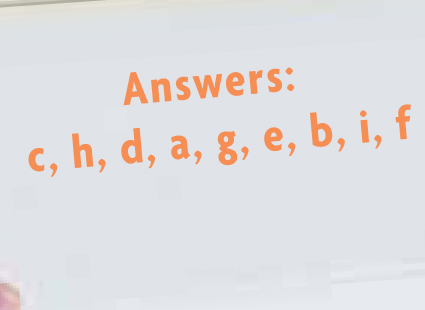Marketing Ideas
Do You Know Your Binding Options?
You worked hard to design that booklet, annual report, or marketing collateral document. But it isn’t truly finished until you’ve selected the right binding. Different binding methods create different effects and are used for different purposes. Do you know what your options are?
Take this quiz to find out how well you know your binding styles. Check your answers at the bottom.

Quiz:
Write the letter from the key that fits each description below.
1) Sheets of paper are nested and stapled together through a centerfold. Typically, this is done with wire staples. _____
2) Sheets of paper are nested and stitched together through the spine with loop wire (as opposed to metal staples). This allows the pages to be inserted into a ring binder. _____
3) Unfolded sheets of paper are stacked and stapled together down the side of the spine from the front to back. _____
4) Tape is wrapped and glued around the spine of the document. The finished binding may or may not include side-stitching for additional strength. _____
5) Folded pages are stacked and glued together at the spine. The spine is wrapped with a paper cover. _____
6) Folded pages are stacked and PUR glued together at the spine. The spine of the book is not attached to the cover, allowing the book to lie all the way open. _____
7) Signatures are folded and stitched through the fold, then sewn and glued together at the spine to form a text block. This combination produces an extremely durable and flexible binding. _____
8) A small number of pages are sewn together through the spine with thread with the help of a converted sewing machine. Sewing can be done through the spine or through the side. _____
9) Books are sewn or perfect bound, then encased with a separate hard or soft cover. _____
Bonus Questions: (No peeking at the descriptions before answering!)
Which forms of binding listed here do not include a centerfold?
Which forms of binding can be used for over 500 pages?
Each form of binding offers different levels of strength and flexibility, a different cost structure, and can accommodate a different range of page counts. If you want to know more about a specific type of binding and the range of applications for which it is best suited, just ask.
Answers:

Bonus Answers:
Answer: side stitching, tape bound, perfect bound, lay flat
Answer: tape bound, perfect bound, lay flat, Smyth bound, case bound


